Note: See warning in paragraph 1 this chapter.
Withdrawal
1. Disconnect the negative battery cable (chapter 5, paragraph 1).
2. Drain the liquid from the cooling system (Chapter 1). If the fluid does not need to be replaced, drain it into a clean container.
4 cylinder engines
3. Remove the resonator support bracket bolts from the engine compartment front cross member. Loosen the screws on the two clamps that secure the resonator to the hoses of the air mass meter and the intake air duct chamber. Then move the resonator away from the thermostat housing (chapter 4).
4. Disconnect the expansion tank coolant hose and upper radiator hose from the thermostat housing outlet.
5. Turn out bolts of a cover of the thermostat and pull out the thermostat (see fig. 4.5). Pay attention to the position of the air release valve, as well as the position of the thermostat (which of its ends is directed outward).
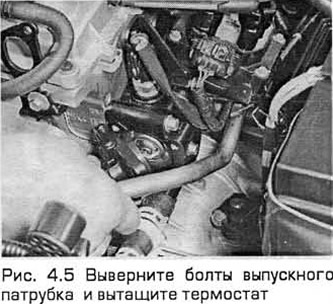
V-shaped 6-cylinder engines
6. Turn out screws and remove a cover of a belt of the pump of the cooling system.
7. Remove the battery (chapter 5A). Disconnect the air supply hose to the air cleaner (chapter 4A).
8. Divide the body into two parts by unscrewing the two bolts. Remove the O-ring (see Fig.4.8,a-c). When installing, the ring must be replaced with a new one.
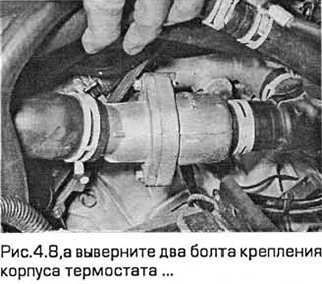
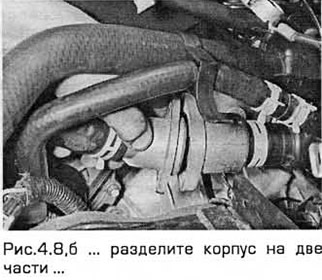
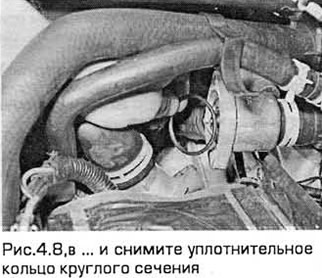
9. Remove the thermostat, considering which side it is installed (see fig.4.9).
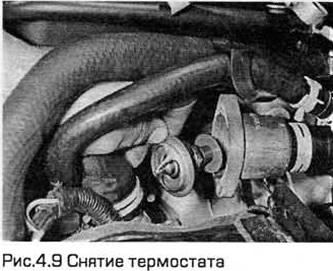
General check
10. Before assuming that the thermostat is causing a malfunction in the cooling system, check the coolant level, tension and condition of the accessory drive belt (Chapter 1) and operation of the temperature gauge.
11. If you feel like the engine is taking too long to warm up (what do you judge by the temperature of the air leaving the heater or the operation of the temperature gauge), it is likely that the thermostat is stuck open. In this case, replace it.
12. If the engine heats up too quickly, touch the upper radiator hose with your hand. If it is not hot and the engine is hot, then the thermostat is stuck closed, preventing coolant from flowing from the radiator into the engine. Replace thermostat.
13. If the upper radiator hose is hot, coolant is flowing through it and the thermostat is open. Cm. "Troubleshooting" to determine a possible malfunction of the cooling system.
Thermostat check
14. If the thermostat stays open at room temperature, it is defective and needs to be replaced.
15. For a complete check, omit (on a rope) closed thermostat together with a thermometer into cold water. The water container must not touch other objects.
16. Heat the water and watch the temperature at which the thermostat starts to open. Compare this value with the specifications.
17. Continue heating the water until the thermostat fully opens. This temperature is stamped on its end. Take out the thermostat and let it cool down. Make sure it is completely closed.
18. If the thermostat does not open and close as described above, or if it sticks in any position, or does not open at the regulated temperature, then it must be replaced.
Installation
19. Installation - in the reverse order of removal.
- A) Clean mating surfaces. Replace the thermostat o-ring if it is worn or damaged.
- b) Then install the thermostat. On 4-cylinder engines, the air release valve is directed upwards (see fig. 4.19).
- V) Tighten the cover-to-body bolts to the required torque.
- G) Connect all disconnected hoses (Chapter 1).
- d) Pour fluid into the cooling system (Chapter 1).
- e) Start the engine and after warming it up to normal operating temperature, check for leaks and thermostat operation.
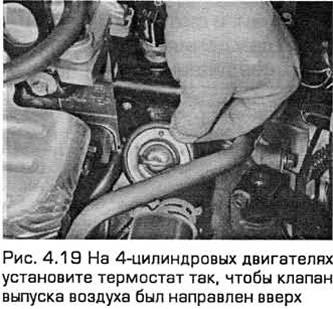
Visitor comments